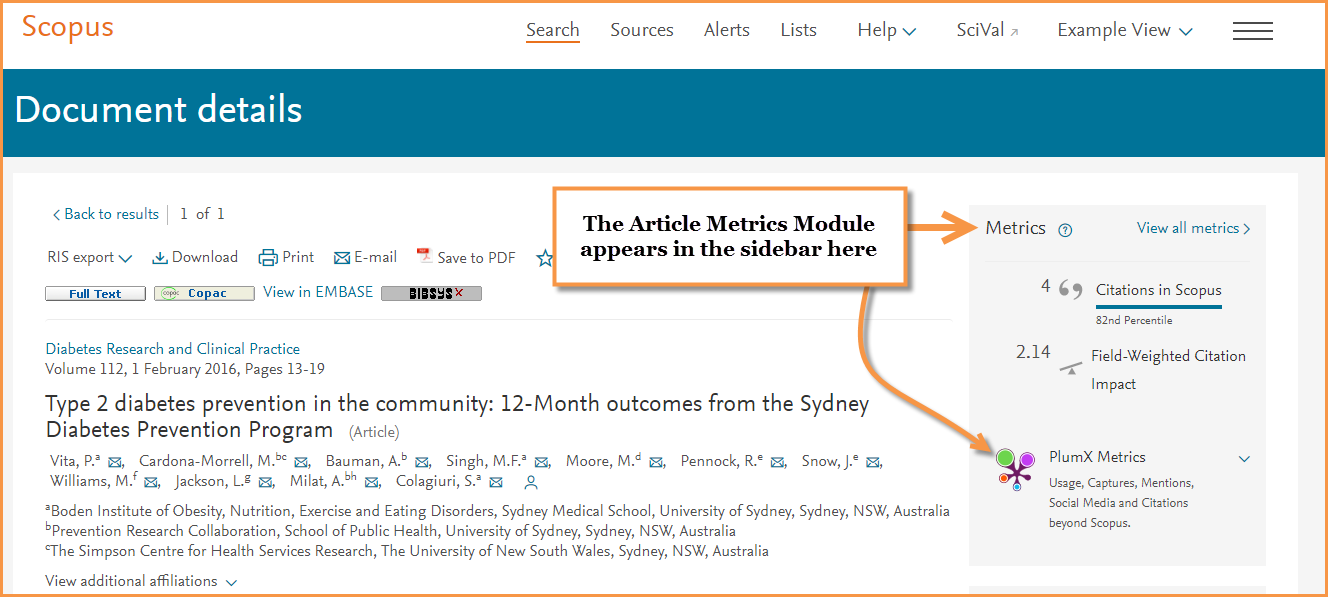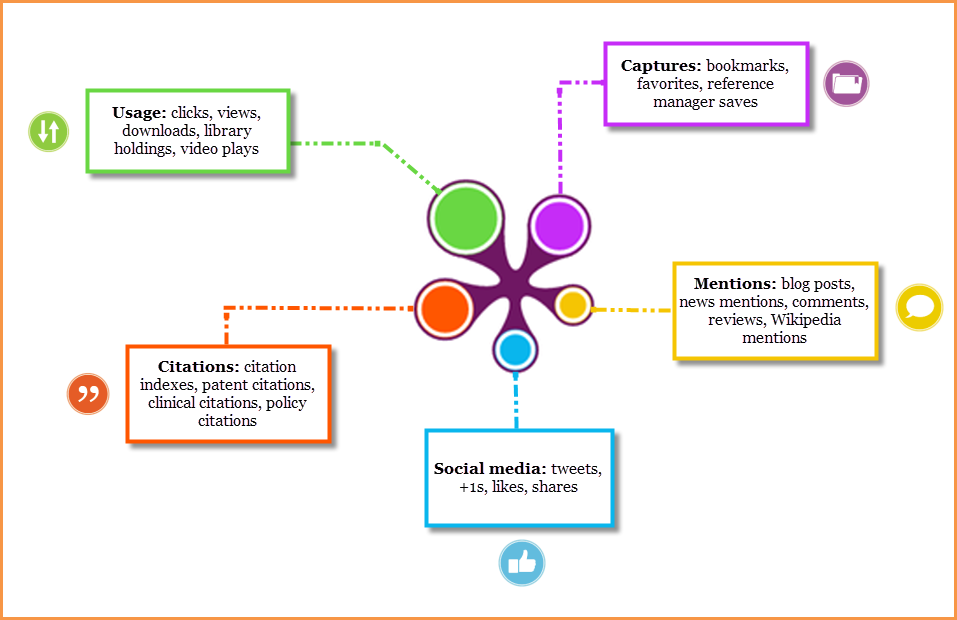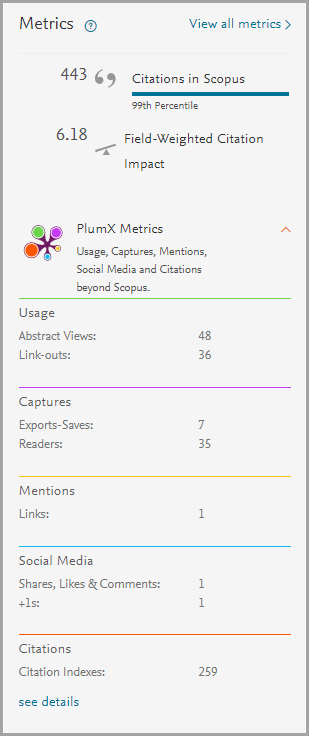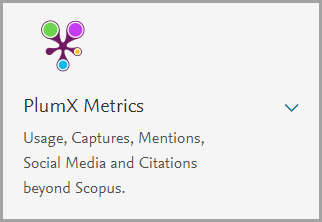PlumX Metrics now on Scopus: Discover how others interact with your research
PlumX Metrics – with five categories of metrics – is now the primary source of article-level metrics on Scopus alongside the Scopus citation count (along with percentile benchmarking) and Field-weighted citation impact.
How to get to the Article Metrics module on Scopus:
You can find the Article Metrics module on a Scopus Document details page, where a sidebar highlights the corresponding article-level metrics. Clicking on “View all metrics” opens a more detailed Metrics page, displaying all available metrics and the underlying content for further analysis and understanding.
What PlumX Metrics on Scopus offers:
PlumX Metrics is Plum Analytics’ comprehensive, item-level metrics that provide insights into the ways people interact with individual pieces of research output (articles, conference proceedings, book chapters, and many more) in the online environment. To support like-with-like analysis and help make sense of the huge amounts of data involved, they are divided into five categories:
- Usage
- Captures
- Mentions
- Social media
- Citations
You will also find the Plum Print — a data visualization where each circle represent the different metric categories by color. The larger the circle, the more metrics in that category.
As a researcher, you can use PlumX Metrics to help evaluate the impact of your work and understand how individual articles are being consumed. To illustrate how this works, let’s look at this example of an Article Metrics module on Scopus.
For this article, you can see the strongest interactions are in Usage, Captures and Citations, with fewer interactions in the areas of Mentions and Social Media. From this information you could conclude that the article is widely read and cited, it’s also worth taking a deeper look into Mentions and Social Media to determine whether or not you want to explore ways to further promote your work.
As another example, let’s consider an article that was recently published and therefore not available long enough for citations to accrue. Here, PlumX Metrics can provide some early indicators about the impact of your research. Does your Plum Print show larger circles in the Usage (green), Captures (purple) and Social Media (blue) areas? This could indicate that your article is already being consumed and talked about, giving you early analytical information that you can begin using to showcase your work.
These are just a couple of examples of how you might use the new PlumX Metrics in Scopus. If you would like to learn more details behind the metrics and how they can help you tell the story of your research, join our next webinar on August 10.





